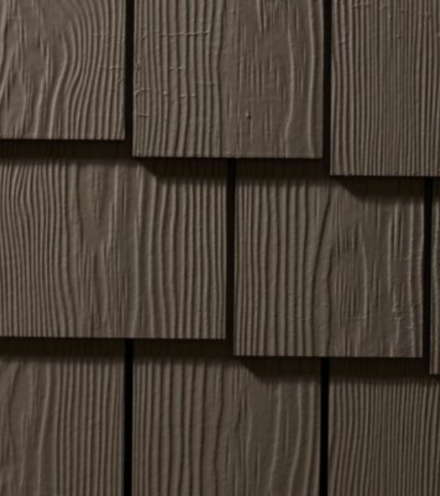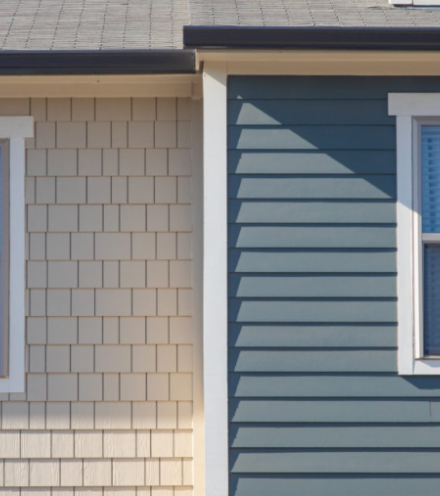From June to November, known as the Atlantic “hurricane season” in the U.S., many homeowners who haven’t equipped their homes with hurricane-resistant siding hold their breath. Hurricanes bring torrential downpours that cause flooding, water damage, and downed power lines, and these powerhouse storms are often accompanied by fiercely strong winds that can topple and tear down buildings in the blink of an eye.

Hurricanes can strike just about anywhere along the Gulf of Mexico and the Atlantic coastline. Their effects extend much further since they often move inland and become tropical storms. Towns in the Midwest can also feel the lingering momentum of an intense hurricane, which is why hurricane-resistant siding is growing in importance and popularity throughout the country.
Your home is a place of comfort, refuge, and protection, and so it is vital to invest in high-quality materials, like hurricane-resistant siding, that protects those who call it their home. Not all siding options are the same. Understanding the risks and rewards of different materials can help homeowners select the best siding for high wind areas, secure their investment, and safety during storms.

Devastating Effects of Hurricanes on Homes
Hurricanes are fed by incredibly strong winds, which often carry the brunt of their force and cause the most damage. High winds and intense wind gusts can lift the roof off of a home, stripping the exterior of its siding, and even demolishing the foundational structure and support beams underneath. These items are lifted and tossed far distances — sometimes even several miles — before landing.
Not only is this damage devastating for the homeowner, but it can also be quite dangerous for the surrounding community. Siding panels, beams, and other building materials can essentially become missiles when picked up and propelled by hurricane-level winds.
The strength and safety of a home come down to the quality of the construction and building materials used. Remodeling or rebuilding a home altogether following a severe weather event can be overwhelmingly taxing — emotionally, physically, and financially. Getting the home outfitted with hurricane-resistant siding can save an abundance of time, money, and stress. The exterior siding is often the first line of defense on a home, and if it performs well, it can help protect other areas of the house from incurring damage.

Best and Worst Siding for High Wind Areas
Determining the best siding for high wind areas requires evaluating the quality of the construction and the materials. Some materials are simply weaker and more susceptible to stripping, breaking, and flying off the home when a strong wind gust hits. In general, vinyl and asphalt tend to be the weakest siding materials and are not equipped to handle the high winds of a hurricane. For that reason, these materials require extensive upkeep, repair, and replacement, and they are generally not recommended for homes located in hurricane zones.
Wood siding tends to be slightly stronger than vinyl and asphalt, but it still doesn’t perform sufficiently enough to clinch the “best siding” label for high wind areas. Another problem with wood is that its strength truly depends on the thickness of its beams, the type of wood used, and the quality of construction. These variables can change from home to home, so some houses with wood siding tend to be stronger than others.
The best siding for strong wind areas is fiber cement, by far. Durable, tough, and well-equipped to stand up to the intense wind gusts common during hurricane season, fiber cement siding easily outperforms other siding options in severe weather conditions.

Hurricane-Resistant Siding that Doesn’t Sacrifice Style
The beauty of fiber cement is that, on top of being the best siding for high wind areas, it is also a building material that accommodates various looks. There’s no need to sacrifice style to obtain the safety, durability, and strength needed for keeping your home and all those inside protected during severe weather conditions. Whether you’re into a mid-century modern exterior, a classic colonial-style design, or somewhere in-between, there are all sorts of siding options made with fiber cement to suit different styles.

Another great advantage of fiber cement as a building material is that it is used on much more than just siding. There are also soffit, backerboard, and trim options crafted with fiber cement in addition to shakes and panels. This gives homeowners the opportunity of outfitting their home with hurricane-resistant siding that works alongside other hurricane-resistant features, like trim and soffit.

When it comes to providing the best defense against hurricanes and other extreme weather conditions, having the best siding for high wind areas can be a game-changer. With fiber cement, homeowners can be confident in their home’s ability to perform better against high winds, providing invaluable peace of mind and safety.
For more information on hurricane and storm-resistant siding, contact an expert at Allura today.




